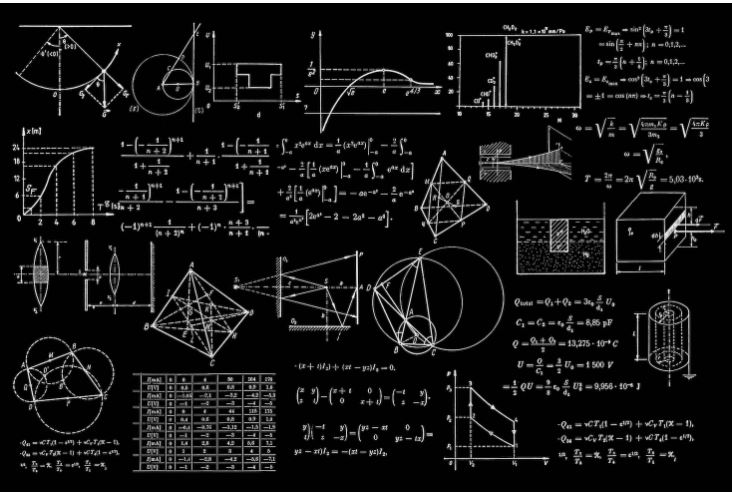Ace Your IB Physics HL Internal Assessment: Topics, Ideas, and Guidelines
The International Baccalaureate IB Physics HL program is renowned for its rigorous curriculum that challenges students to delve deep into the world of physics. One of the significant components of this program is the Internal Assessment (IA), a unique opportunity for students to explore a physics topic of their choice in-depth. In this article, we will guide you through the process of selecting a compelling IA topic, generating innovative ideas, and adhering to essential guidelines for a successful outcome.
Selecting the Right IA Topic
Choosing the right IA topic is like setting the foundation for a strong building. It’s crucial to pick a topic that resonates with your interests, aligns with your strengths, and offers room for exploration. Start by brainstorming areas of physics that captivate your curiosity. Are you drawn to mechanics, thermodynamics, optics, or any other subfield? Once you’ve identified a broader area, narrow it down to a specific research question. A well-defined question will guide your research and keep you focused.
For instance, if you’re intrigued by mechanics, you might ask, “How does the angle of launch affect the range of a projectile?” This question not only allows you to explore projectile motion but also requires experimentation and data analysis, which are key components of an excellent IA.
Generating Compelling Ideas
The heart of a remarkable IA lies in its innovative approach. While some topics have been explored extensively, there’s always room for a fresh perspective. Engage in research to discover gaps in existing knowledge or unexplored angles within familiar subjects. Collaborate with your teachers, classmates, and even online physics communities to bounce off ideas and gain insights.
Consider a scenario where you’re interested in investigating waves and sound. Instead of the traditional examination of sound waves’ properties, you might delve into the acoustic properties of different materials, studying how they affect sound transmission. This novel approach showcases your ability to think critically and apply physics principles creatively.
Guidelines for a Stellar IA
To create a standout IA, it’s essential to follow the structure and components outlined by the IB program. Your IA should consist of an introduction, methodology, analysis, conclusion, and evaluation. The introduction sets the stage by explaining the context and significance of your research question. The methodology outlines how you conducted your experiments and gathered data. The analysis interprets your findings using appropriate physics concepts and calculations. The conclusion summarizes your results and ties them back to your research question, while the evaluation reflects on the strengths and limitations of your approach.
Throughout your IA, clear communication is key. Ensure your writing is concise, your diagrams are labeled, and your explanations are easy to follow. Remember, your IA is not just about showing off your scientific prowess—it’s about your ability to communicate complex ideas effectively.
Practical Tips and Best Practices
A successful IA is a product of effective time management, careful planning, and meticulous execution. Start early to allow ample time for experimentation, data collection, analysis, and writing. Plan your experiments thoroughly, considering variables, controls, and safety precautions. Keep detailed records of your procedures, observations, and calculations. This not only helps in data analysis but also demonstrates your scientific rigor.
Avoid common pitfalls, such as rushing through experiments without ensuring accuracy or losing focus on your research question. Stay organized by creating a timeline or a project plan that breaks down tasks into manageable chunks. Consult your physics teacher regularly for guidance and feedback.
Sample IA Ideas and Their Execution
To better understand how to approach your IA, let’s explore two sample IA ideas: one in the realm of mechanics and the other in thermodynamics.
Sample IA Idea 1: Investigating Friction and Surface Texture
Research Question: How does the surface texture of materials affect the coefficient of friction?
Methodology: Conduct experiments by sliding objects of various textures across different surfaces. Measure the force required to initiate motion and the force required to maintain constant motion. Record your observations and data.
Analysis: Use Newton’s laws of motion and relevant equations to analyze your data. Plot graphs to visualize trends and draw conclusions about how surface texture impacts friction.
Sample IA Idea 2: Exploring Heat Transfer
Research Question: What factors influence the rate of heat conduction through different materials?
Methodology: Set up an experimental apparatus with materials of varying thermal conductivities. Apply heat to one end and measure the temperature change across the material. Repeat for different materials and thicknesses.
Analysis: Apply the principles of heat conduction and thermal conductivity to explain your observations. Compare your results with theoretical predictions and discuss any discrepancies.
By analyzing these examples, you can see how research questions are translated into experiments, data collection, and analysis while integrating relevant physics principles.
Expert Insights and Teacher Recommendations
Who better to guide you than experienced IB Physics teachers? We reached out to several educators for their insights into creating a remarkable IA. According to Ms. Smith, an IB Physics teacher with over a decade of experience, “The key to a successful IA is the fusion of genuine curiosity and systematic scientific approach. When students are genuinely interested in their topic, it reflects in their enthusiasm and dedication.”
Conclusion
Embarking on your IB Physics HL Internal Assessment is an opportunity to immerse yourself in the world of physics, to hone your research skills, and communicate your findings effectively. Selecting the right IA topic, generating innovative ideas, and following guidelines are the pillars of success in this endeavor. Remember that your IA is not just a requirement—it’s a chance to explore your passion, push boundaries, and contribute to the field of physics in your own unique way. Approach your IA with curiosity, dedication, and a commitment to excellence, and you’ll undoubtedly ace the challenge before you.




